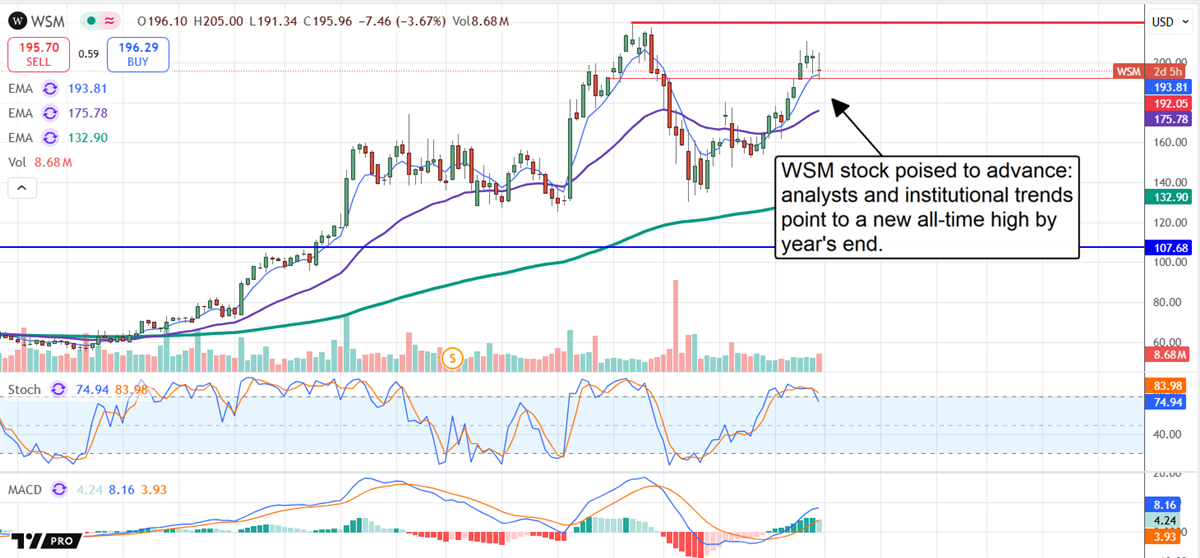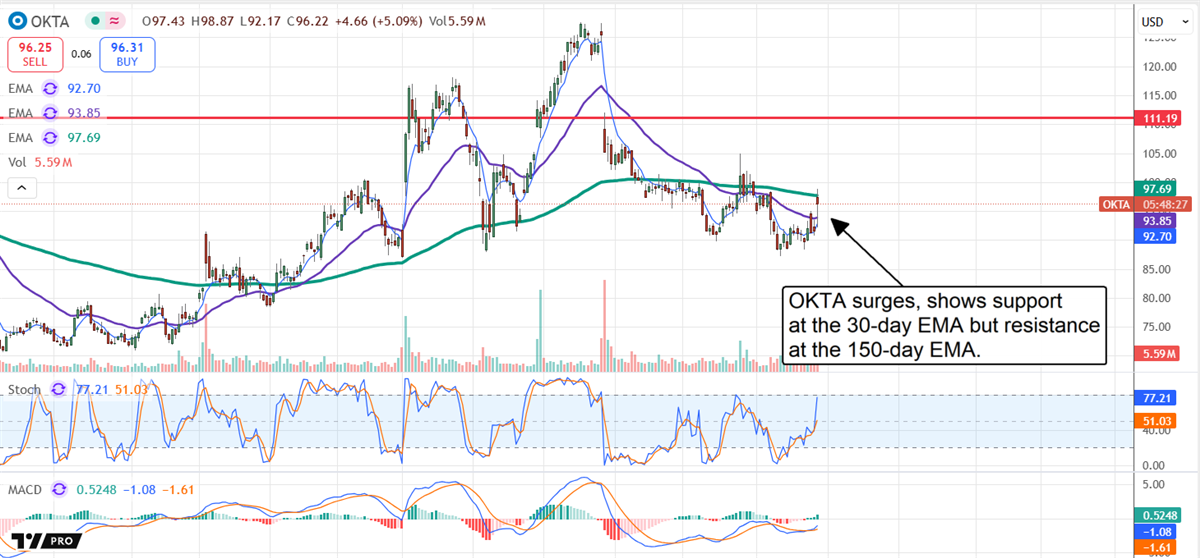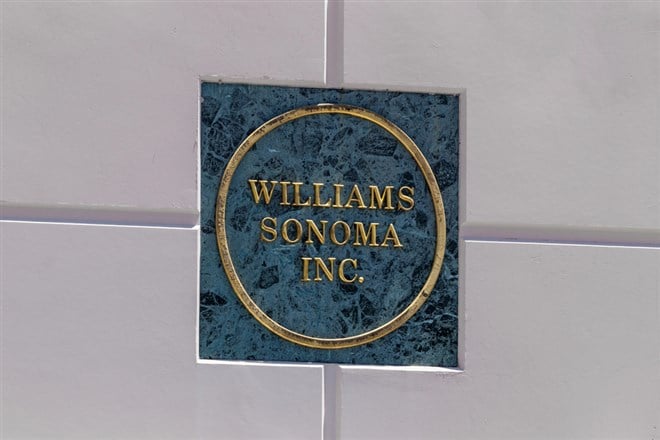Ticker Reports for August 27th
New Global Deals Boost These 2 Defense Leaders
Most investors view the defense and aerospace sectors through a single lens, becoming bullish only when international conflicts escalate and bearish when resolution prospects arise. While this makes sense (on paper), there is a lot more that goes on behind the scenes in terms of drivers for future earnings and contract volumes in the space.
Today, as part of ongoing trade tariff negotiations between the United States and the European Union, defense contracts are increasingly being tied to trade concessions. Most recently, Ukraine proposed a $100 billion weapons procurement deal with the United States, backed by European partners.
Since these developments aren’t tied to news of renewed conflict, they didn’t get a lot of media coverage so retail investors may not have picked up on the trend. However, they provide sustainable tailwinds for defense stocks like Boeing Co. (NYSE: BA) and Lockheed Martin Corp. (NYSE: LMT)—and a reason investors should keep these two stocks on their watchlists.
Why Boeing’s Momentum Looks Set to Continue
While the setup is equally bullish for both of these companies, Boeing is getting the best treatment from the market so far, and there’s a reason for that. Since the company is exposed to both the defense and commercial sides of the equation, Boeing is inherently tapped into other factors driving the commercial industry, particularly airplanes.
As currency valuations shift and travel resumes, new commercial orders boost Boeing’s topline, adding fuel to its defense-driven upside. This commercial strength, paired with defense contracts, has pushed Boeing’s stock to approximately 95% of its 52‑week high. Investors perceive this as momentum in motion, and analysts agree, giving the stock a Moderate Buy rating and assigning it a consensus price target of $228.90.
Earnings Beat Amplifies the Lockheed Case
Lockheed Martin occupies a different strategic vantage point. Trading near 72% of its 52‑week high, it appears that much of the downside has already been priced in. But the bullish outlook, however, isn’t yet reflected in its valuation, and institutional investors like AQR Capital Management are taking notice.
In mid‑August, AQR increased its stake in Lockheed Martin by 6.9%, bringing its total holding to $400 million. This suggests AQR is creating a position ahead of the upside analysts have yet to fully price in.
Here is something investors need to consider, though, before they call this homework done for Lockheed Martin. In it's latest quarterly earnings report, the company reported $7.29 in earnings per share (EPS), beat the $6.57 estimate—and that is even before the new contracts and orders started coming in.
This gives analysts a compelling reason to raise forecasts, further fueling share‑price appreciation. Getting in early could offer gains as the market catches up. Analysts have given LMT stock a consensus price target of $506.35, reflecting a potential upside of over 13%.
Two Paths to Potential: Momentum vs. Value
Boeing and Lockheed Martin represent two distinct—but highly complementary—investment approaches within the defense and aerospace sectors.
Boeing is riding a wave of renewed commercial travel and steady defense contract growth. That dual exposure has made it a top pick for investors chasing near-term upside. But with momentum comes volatility, especially as macro conditions evolve.
Lockheed Martin, on the other hand, offers a more grounded investment case. Its massive defense backlog and consistent earnings make it less susceptible to market swings. Trading at a discount to its historical highs and with institutional backing on the rise, Lockheed provides potential upside with less risk.
Investors don’t have to choose between growth and stability. Holding both names can offer diversified exposure to a sector poised for expansion, driven by structural demand, not just geopolitical shockwaves.
Trump's betrayal exposed
Trump's betrayal exposed
Williams-Sonoma Q2 Results Prove Its Buy-and-Hold Quality
Williams-Sonoma’s (NYSE: WSM) stock price action and results history do not precisely match up; investors should focus on the results history. It includes persistent outperformance in the face of consumer headwinds, brand resilience, pricing power, margin strength, robust cash flow, and capital returns. While the growth outlook is critical to the stock price outlook, it underpins the capital return, the driving force for this market.
Williams-Sonoma is an aggressive capital return machine. It pays a dividend, grows its distribution at a double-digit CAGR, and buys back shares.
The buybacks are among the most aggressive on Wall Street, reducing the count by an average of 4.7% for the quarter. The pace is likely to be kept up due to the health of the balance sheet, cash flow, and authorization amount.
The authorization is sufficient to sustain the Q2 pace for the next three quarters and will likely be increased due to the business outlook. The dividend distribution, which yields about 1.3% in late August, is likewise expected to be increased. It accounts for less than 30% of the earnings outlook and has a nearly 20-year history of prior annual increases.
Williams-Sonoma is in a fortress-like condition; there are no red flags for income investors. Its cash and inventory are up; inventory increased to front-run tariffs, which is a positive development. Equity is steady despite the aggressive buyback, and leverage remains persistently low.
The company carries minimal debt, primarily in the form of lease obligations, and its total liabilities are approximately 1.5x its equity, leaving it in a healthy and flexible financial condition.
Williams-Sonoma Wows Market With Beat-and-Raise Quarter
Williams-Sonoma had a good quarter with results driven by strength in all reporting metrics. The $1.84 billion in net revenue represents a 2.8% increase compared to last year, outpacing the consensus by a slim margin, driven by growth across all brands. Comps were up 3.7% across the network, led by 5% gains in Williams-Sonoma and Pottery Barn Kids, offset by slower performance at Pottery Barn and West Elm.

The company noted strengths in furniture and non-furniture categories and the positive impact of selling at full price. Among its strengths are premium quality, branding, and targeted markets, which enable full-priced selling and product exclusivity despite the challenges of consumer headwinds.
The net result is a wider gross margin and declining SG&A expense, resulting in an operating margin increase of 220 basis points compared to last year and an operating margin at the high end of the long-term target range. Margin is expected to remain strong through the year’s end.
The guidance is good and aligns with the outlook for higher share prices. The company raised its revenue outlook while affirming its margin outlook, forecasting 0.5% to 3.5% top-line growth and no additional impact from tariffs.
The critical takeaway is that tariffs have been priced into the outlook for this retail stock, which includes earnings growth and sufficient cash flow to sustain the capital return.
Sell-Side Support Is Strong: WSM Stock Forecasted to Hit Record Highs
The analysts and institutional trends indicate robust support for this stock. The institutional group, including large shareholders, owns approximately 99% of the shares and has been actively buying.
The group sold in Q1 but reverted to buying in Q2, and the Q3 activity is robust, providing a strong tailwind for price action. Institutional selling virtually dried up in the first half of the quarter, resulting in a buy ratio of nearly 4-to-1 and a sharp updraft in price action, as seen in the charts.
Analyst trends are also solid. The 19 tracked by MarketBeat rate the stock at a consensus of Hold, but the trends reveal increased coverage and firming sentiment, which puts a bullish bias on the data. The number of Sell ratings is in decline, while the number of Buy ratings is rising, along with the consensus price target.
The consensus price target suggests that WSM stock is fairly valued in late August, but the trend suggests otherwise. Recent revisions are leading to a new high of $330, which may be reached before the end of the calendar year.
Altucher: August 30th, Trump's Great Gain is Goes Ballistic
Altucher: August 30th, Trump's Great Gain is Goes Ballistic
Okta: Market Comes to a Boil, Explosive Upside Is Possible
A technical reversal has been brewing for Okta’s (NASDAQ: OKTA) stock market for the last two years, and the market has reached a critical inflection point. The Q2 results affirm its position in the cybersecurity universe, including increasing demand, accelerating growth, and improved guidance that will likely be outperformed.
Accelerating growth is a factor because it signals a cycle bottom; Okta’s growth is robust but had slowed to a multiyear low in Q1. The takeaways include outperformance relative to MarketBeat’s reported consensus and improved profitability with GAAP profits and positive free cash flow in the mix.
Okta Defies Expectations: Grows, Accelerates, and Outperforms in FQ2
Okta had a solid quarter in FQ2, bringing in $728 million in net revenue, representing a nearly 13% increase compared to the same period last year. The strength was driven by a 12% increase in the core subscription business, outperforming the consensus by more than 220 basis points. RPO, the leading indicator of revenue, grew by 18%, suggesting the acceleration will continue in the upcoming quarters.
The margin news is also substantial. Not only did the company revert to GAAP profitability, but it widened the adjusted operating margin by 500 basis points. The net result is a 36% increase in operating profits and robust free cash flow. The $0.91 adjusted earnings are up by 26% and outpaced by more than 500 bps.
The guidance is somewhat mixed, but its strengths offset its weaknesses. The weakness is seen in the Q3 outlook, which forecasts top-line strength above the consensus, but EPS should align with it. The offsetting detail is the full-year outlook, which includes revenue and earnings forecasts above consensus figures.
The likely outcome is that Q3 and full-year performance will be stronger than predicted.
And there are no red flags on the balance sheet for investors to worry about. The company is well-capitalized, generating positive cash flow in Q2, which is sufficient to increase its cash position and assets while reducing debt and liabilities.
The net result is a 460 basis point improvement in shareholder equity, accompanied by persistently low total leverage, with total liabilities less than 0.5 times the equity.
Analysts and Institutions Are Driving Okta’s Price Action Higher
The analyst and institutional trends are bullish for Okta and driving its stock price action in Q3. They include institutions buying at a pace of 2-to-1 versus sellers, a strong tailwind given their ownership of 87% of the stock, as well as an increase in analysts' coverage.
The coverage is up by double digits in the preceding 12 months, with sentiment remaining steady at Moderate Buy, a bullish bias, as 59% of 37 ratings are Buy, and the price target remains unchanged.
The price target is a critical factor, forecasting nearly 30% upside in late August and a return of this market to long-term highs.
The technical action following the release was favorable. The market surged by 5% in premarket trading and opened with a gap.
The move shows support at critical levels, but it also carries risk. The early move was halted at the 150-day EMA, which could cap gains in calendar Q3.
The mitigating factor is that support remains evident at the 30-day EMA, which serves as a launchpad for short-term traders who can help keep this market moving higher. OKTA stock can move above the 150-day EMA in this scenario and will likely gain bullish momentum when it does.

The $60 Billion Tesla Mystery No One Can Explain… Until Now
The $60 Billion Tesla Mystery No One Can Explain… Until Now







0 Response to "🌟 New Global Deals Boost These 2 Defense Leaders"
Post a Comment